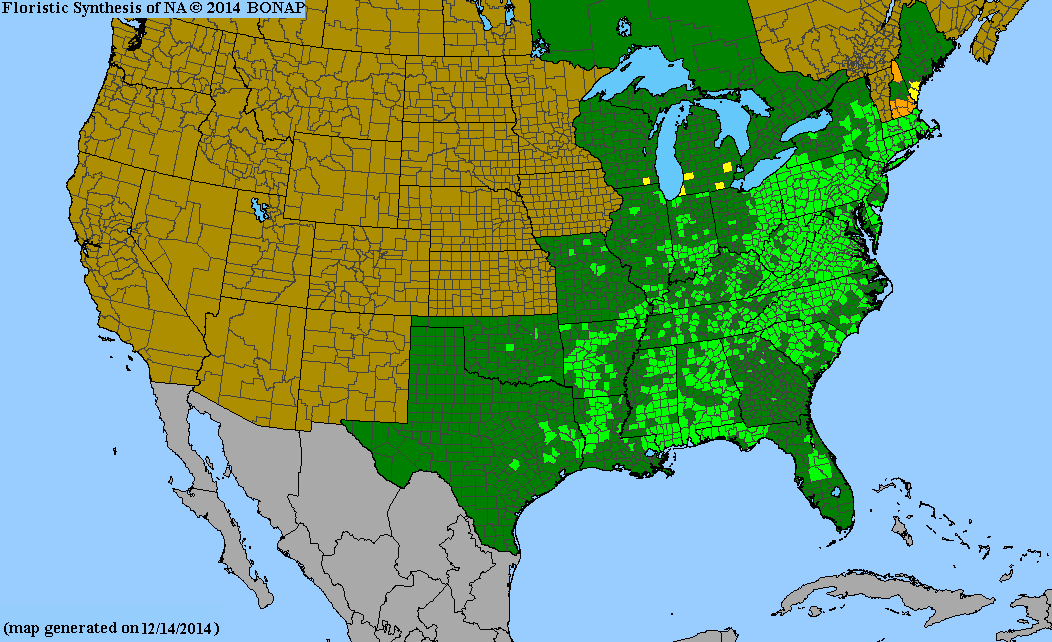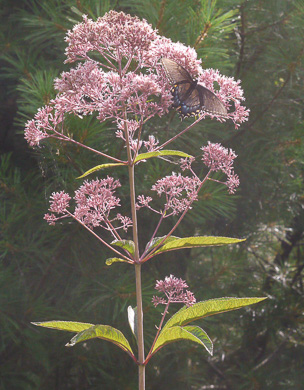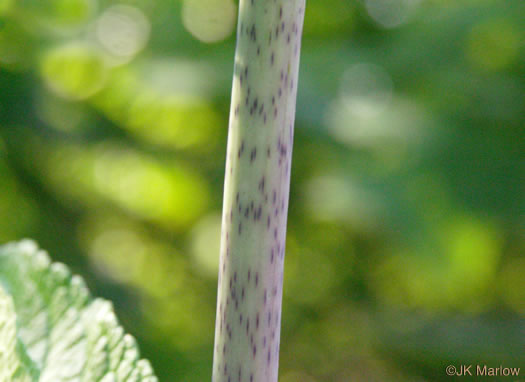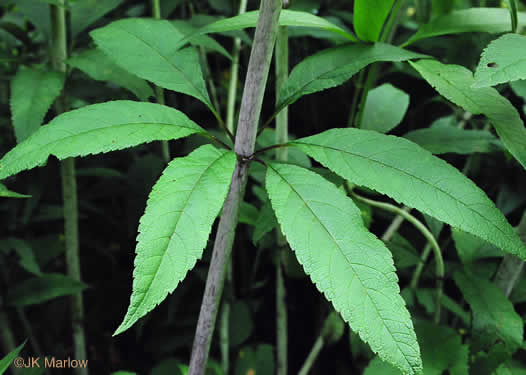Asteraceae
hollow-stem Joe pyeweed
Eutrochium fistulosum
Synonyms
Eupatoriadelphus fistulosus
Eupatorium fistulosum
Other Common Names
purple thoroughwort, trumpetweed
Plant Type
Herbaceous Wildflower
Life Cycle
Perennial
Typical Size
4-8 ft. tall
2-4 ft. wide
Tolerant of
Deer
Inolerant of
Dry Soil
Propagation
By seed, By cutting, By division
Plant Propagation Notes
Sow seed thickly in the fall to account for low germination rates. Can be propagated by cuttings taken in late spring. Divide mature clumps in fall or spring.
Plant Planting Notes
24′ spacing.
Plants/Diseases
No serious disease or insect issues. Leaves my burn if soil dries out for too long.
Wildlife Benefits
Nectar/pollen source for pollinating insects, Host plant for butterfly larvae, Fruit/seeds for birds
Leaves
Lanceolate, rough leaves arranged in a whorl of 4-7 around the stem. Leaf margins serrate or crenate. Leaf blade up to 6 inches long and 1-3 inches wide.
Flowers
Individual flowers 1/3 inch wide arranged in a large panicle up to 18 inches wide.
Fruit
Achenes with hairy bristles that help disperse the seeds in the wind.
Bark
Stems are hollow, round, and purple.
Toxicity
No known toxicity.

USDA Hardiness Zones
4, 5, 6, 7, 8
Light Exposure
Full Sun, Part Sun/Shade
Soil Moisture
Moist
Soil Drainage
Well-drained, Poorly Drained
Soil pH
Neutral (6.0-8.0)
Native in South Carolina?
Yes
Plant Native Habitat
Wet lowlands, alluvial woods, along streams, moist meadows, bogs, marshes with permanently saturated or seasonally flooded organic soils, open sun or partial shade.
Global Conservation Status (NatureServe)
Secure (G5)
Federal Conservation Status (USFWS)
Not Listed
Distribution Notes
Common in the SC Mountains and Piedmont and uncommon in the Coastal Plain



